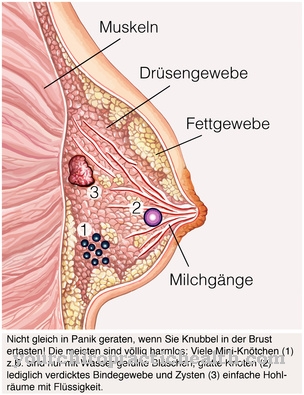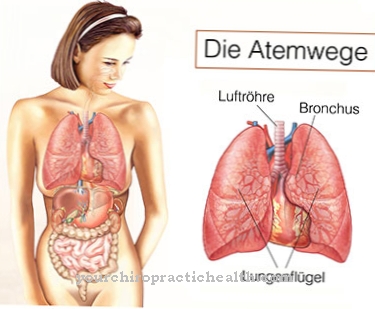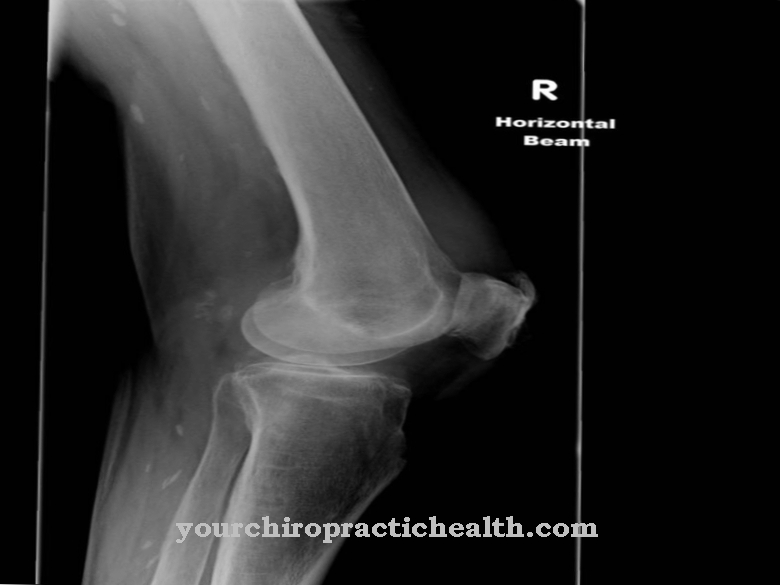Due to the rapid spread of the Zika virus, the World Health Organization (WHO) has declared a global health emergency. The one already known since 1947 Zika virus infection is transmitted by mosquitoes. This viral disease initially appeared in Africa, Southeast Asia, and the Pacific Islands. Recently, more and more people in Central and especially South American countries have been infected by the pathogen.
Zika virus infection
The virus was first discovered in a monkey near the Ugandan capital Kampala. It got its name from the name of a forest area near Kampala. According to the WHO, the first human disease was found in 1968. The Zika virus is assigned to the Flaviviridae family. The virus infection is transmitted by mosquitoes.
These include the Asian tiger mosquito Aedes albopictus and the yellow fever mosquito Aedes aegypti. There is a suspicion that there is also a possibility of infection from person to person, for example through sexual intercourse. So far, however, there is no scientific proof of this. The consequences of the viral disease are harmless in large numbers. If symptoms and symptoms are noticed at all, they are similar to those of mild flu.
In individual cases, however, there is suspicion of severe damage to newborns from the virus. In the absence of any scientific evidence, experts believe that it is very likely that the Zika virus will cause a deformity of the head in fetuses. The disease cannot yet be cured with medication. It is only possible to alleviate the symptoms that occur. A vaccine is not available.
causes
The reason for the frequency of virus transmission and the extremely rapid spread over large areas is the large number and survivability of the mosquito species. The simple transfer option also plays a role here. When people who are already infected with the Zika virus bite, the mosquitoes ingest the virus and can spread the pathogen further.
In addition, the eggs of the yellow fever mosquito in particular are particularly resistant. Eggs deposited in means of transport such as airplanes, ships or trucks can survive for a long time even with small amounts of liquid. It is significant that the diseases only occur on a massive scale in those areas where mosquitoes are also widespread. Diseases with the Zika virus have already been detected in 21 countries in North, South and Central America.
Brazil and Colombia as well as many Caribbean countries are particularly hard hit. For Brazil, the host country of the next Summer Olympics in 2017, an increase in diseases to 1.5 million people is forecast. One thing is of particular concern: the Zika virus is also the cause of an increasing number of diseases in newborns with irreparable, and in exceptional cases even fatal, effects. In Polynesia, the Zika virus was also suspected, unproven, of being the cause of some cases of Guillain-Barré syndrome (nerve disease).
Symptoms, ailments & signs
When the viral illness makes itself felt in an infected person, which is not always the case, symptoms appear like those of mild flu. These include a slight fever, headache and rash with redness and itching. In individual cases, however, more dangerous developments can occur via the transmission route through pregnant women.
In fetuses and newborns, the most severe changes can be seen in the head area. In Brazil, 3893 cases of microcephaly (malformation caused by a significantly reduced skull) were recently registered. In the previous year, only 147 cases of this particular disease were found in Brazil. Of the almost 4,000 new cases, 50 affected children have already died due to a causal connection to the malformation.
In addition, severe intellectual disabilities have occurred in numerous cases as a result of the Zika virus infection. Guillain-Barré syndrome, which appeared in Polynesia at the same time as the virus disease, has not yet occurred in other countries affected by the Zika virus. Nevertheless, scientists and doctors without previous laboratory results believe it is possible that there may be a connection with the Zika virus.
The symptoms of the disease of the nerve tracts are predominantly paralysis and sensory disturbances. In severe cases, breathing or heart problems can also arise.
Diagnosis & course of disease
Due to the Zika virus infection, which is often not noticed by the person concerned, in many cases no examination is carried out. If the flu-like symptoms occur, a medical examination is also often omitted. This is due to the less severe symptoms and the short duration of the illness.
As a rule, the impairments such as a slight fever or headache and body aches no longer exist after a few days. A reliable determination of the Zika virus infection is only possible by means of a blood test. The course of the disease in microcephaly shows mental and physical developmental disorders. In exceptional cases, however, unimpaired development is possible despite the head circumference being too small. The malformation can be determined for the first time by ultrasound during pregnancy. Computed tomography is used to confirm the findings.
Complications
In the worst case, the Zika virus infection can lead to the death of the person concerned and must therefore always be treated. If left untreated, this can lead to long-term complications and complaints that can no longer be treated easily. Those affected suffer primarily from a high fever and headache, and sometimes a rash appears.
This is associated with reddening or itching and also has a negative effect on the aesthetics of the person concerned. If the person concerned is pregnant and has a Zika virus infection, the child may be affected by malformations or other disabilities. In the worst case, it can lead to stillbirth. The parents and relatives also suffer from severe psychological complaints and therefore need psychological treatment in order to avoid depression.
In the further course of the Zika virus infection, those affected often suffer from sensory disturbances or paralysis. The heart function or breathing can also be negatively affected by the disease. Treatment of the Zika virus infection is usually symptomatic and can limit most symptoms. In most cases, there are no particular complications.
When should you go to the doctor?
Before going abroad, the person concerned should inform himself in detail about the health conditions of his travel destination. In particular, local risk factors must be found out. In many cases, the Federal Foreign Office or tour operator can help answer questions about local illnesses and the options for medical care. This process can be done without the cooperation of a doctor. If the travel destination is in a region in which there is a risk of contagion with various diseases, a doctor should be discussed to what extent preventive measures can be taken. In many cases, vaccinations or other medical preparations help with adequate protection.
If the person concerned suffers health problems at his travel destination, it is generally recommended to consult a doctor. Pregnant women in particular should initiate a check-up visit with a doctor at the first irregularities. If symptoms such as fever, headache or changes in the skin texture arise after being bitten by an insect, there is cause for concern. Disturbances in perception, numbness on the skin or sensory disturbances must be presented to a doctor. In the event of a rash or discoloration of the skin, a doctor should also be consulted. An increase in health problems should be examined and treated as soon as possible. Without medical care, the Zika virus infection can be fatal.
Therapy & Treatment
It is currently not possible to cure Zika disease with special drugs. The symptoms that occur are treated as part of a disease caused by the Zika virus according to the symptoms. With painful side effects, generally effective painkillers can be taken. In the case of recognizable skin defects, soothing, disinfecting rubs on the affected areas help. If necessary, this can also be an itch relieving medicine.
Fever causes the body to lose a lot of fluid, especially in warmer areas. In order to avoid a weakening of the state of health, it is therefore advisable to forego greater exertion. In this case, bed rest and increased fluid intake are beneficial. Therapy for malformations of the head can be necessary for the psychological stability of both the child and the mother.
In addition, therapies to treat physical problems such as mobility or strength deficits are conceivable. In the rare case of simultaneous illness with Guillain-Barré syndrome, there is a need for treatment. Due to the disease of the nerve tracts, muscle weaknesses can arise from the legs. Under certain circumstances, this can lead to complete paralysis of the limbs.
In extreme cases it is even possible that the symptoms of paralysis affect breathing in a dangerous way. In addition, the disease, which can be painful, can trigger cardiac arrhythmias. Emergency medical measures must be initiated immediately in the event of impairment of breathing or the heart.
prevention
A preventive vaccination against the Zika virus is currently not possible. Therefore, preventive measures must focus on protection against mosquitoes as a vector. This includes wearing clothing that covers the body. Technical aids such as mosquito nets are also advantageous.
Suitable mosquito repellants such as lotions, creams or sprays can also be helpful. Comprehensive protection is not possible, especially for beach holidaymakers in the priority areas. Another problem is that the yellow fever mosquitoes in particular are not only attracted by bodies of water, but also by sweet drinks and food.
Aftercare
Zika virus infection is usually mild and non-recurrent. Follow-up care focuses on clarifying the typical symptoms of the febrile illness and treating them as necessary. The patient must be informed about the symptoms of possible secondary diseases so that he can consult a doctor at an early stage in the event of complications.
As part of the aftercare, the cause of the Zika virus infection must also be determined in order to avoid re-infection. The doctor can give tips on how to avoid contact with the pests and what to do in the event of re-infection. With a chronic course, follow-up care for a Zika virus infection can extend over months or even years.
Long-term treatment may be necessary, with affected patients primarily needing drug therapy. Painkillers and antibiotics must be precisely dosed and adapted to the respective symptoms of the Zika virus infection. For pregnant women who suffer from a Zika virus infection, a consultation is part of the follow-up care, during which the unborn child is made aware of the possible consequences of the disease. If necessary, the patient can then be given further contact points and tips.
You can do that yourself
A Zika virus infection can so far only be treated symptomatically. The most important self-help measure is physical rest. Pain reliever drugs may be taken. It is important to carefully observe the symptoms and note any abnormalities in a complaint diary.
If the fever gets worse or any other health problem occurs, a visit to your family doctor is recommended. Sufficient sleep and a suitable diet are important. Affected people should also drink enough water and limit contact with other people. The disease should be cured after a few days. The doctor can clarify the symptoms and provide further tips.
Since the Zika virus infection is a typical infectious disease, there are various tried and tested countermeasures such as warm pads, moderate exercise and avoiding stress. The fever should be measured several times a day and the body temperature noted. Medical advice is required in the event of abnormalities. In addition, sufferers must inform themselves about the various symptoms. Sick pregnant women and women who want to have children are at risk of miscarriage. You should speak to your gynecologist and cure the infectious disease quickly.




.jpg)

.jpg)




















